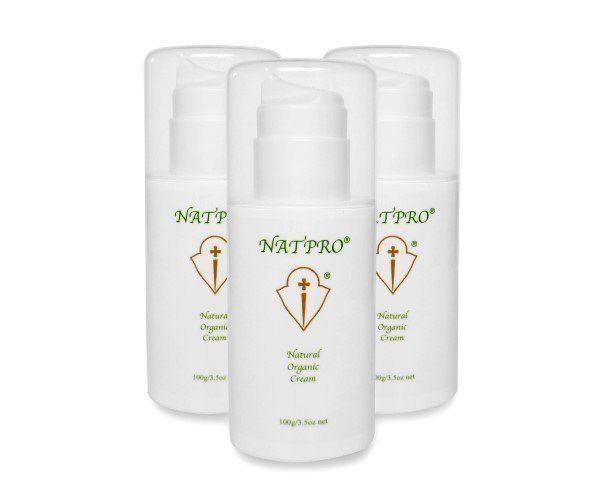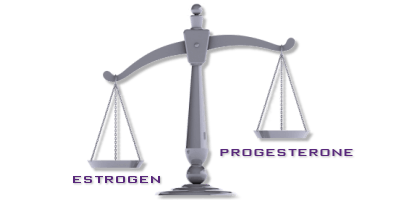PERI-MENOPAUSE
"Before using progesterone cream for the first time, please read First Time Users, How to use Progesterone Cream and Estrogen Dominance
Peri-Menopause is a time when progesterone is vital for well being. Levels start dropping from the age of thirty five, whereas estrogen remains at normal levels until menopause, when they drop sharply. The reason for the drop in level is anovulation. From thirty five onwards ovarian function declines, ovulation does not occur every month, and progesterone levels in those months will be very low. For ovulation to occur an egg needs to reach maturity, the following explains what happens in the cycle.
The first half of the monthly cycle is known as the follicular phase, and it can range from seven days to twenty-one days. Progesterone is present in extremely small amounts, estrogen and follicle stimulating hormone (FSH) being the dominant hormones.
When the egg has reached maturity, another hormone called lutenising hormone (LH) is released by the pituitary. Approximately twenty four hours later this causes the Graafian follicle to rupture releasing an egg, commonly known as ovulation. The follicle, which is now called the corpus luteum due to its yellow colour, starts producing progesterone, which it does for the next fourteen days, progesterone is now the dominant hormone. This part of the cycle is known as the luteal phase.
During peri menopause cycles become very erratic, bleeding can be very light to flooding, 2 weeks apart to 3 months apart, clots, spotting, sometimes pain. Although progesterone can normally be used to regulate the cycle, unfortunately no amount is going to regulate it once peri menopause has started.
It's the imbalanced ratio of the two hormones that causes the symptoms. Both serum and saliva tests can be done to check levels of hormones, saliva being the more accurate of the two. This is difficult in peri menopause when cycles can be so erratic. The reference used below is the UK standard. Only the luteal phase level has been shown to save confusion.
In some women symptoms can start ten years before menopause, the average age of which is fifty one, sometimes they can persist from 5 to 10 years after.
This is also a time when the medical field will recommend that you go on HRT - please DO NOT do this, it is not necessary!!

If you have any questions about Natpro Progesterone Cream
Below is a comprehensive list of the symptoms that can occur during peri-menopause...
- abdominal bloating
- aches and pains, including joint pain
- agoraphobia
- aggression, anger, rage, resentment
- alcoholism, particularly pre-menstrual
- allergies
- anxiety, nervousness, irrational fear
- arthritis, joint and muscle pains
- blood clots
- breast tenderness
- bruising and capillary breakage
- chronic fatigue - muscular weakness, procrastination, exhaustion, tiredness, mental confusion, difficulty in getting up after enough sleep, lethargy
- clumsiness
- cold hands and feet
- constipation
- cracked heels
- cravings, eating disorders, binges, inability to tolerate long intervals without food
- cysts - breast and ovarian
- dizziness
- depression - loneliness, uselessness, endless crying, irrational behaviour
- fibroids
- guilt
- hair loss and excessive facial hair
- headaches
- hot flushes/flashes and night sweats
- hypoglycaemia (low blood sugar)
- hypothyroidism
- incontinence
- insomnia
- irregular menstrual flow, heavy or light flow
- irritability
- lack of self confidence and esteem
- low libido
- memory loss
- mood swings and irritability
- nails - flaking, brittle and weak
- osteoporosis
- palpitations
- panic attacks
- personality changes
- skin problems-dry skin and early ageing of the skin
- sleep disturbances
- tension
- urinary tract infections, cystitis
- vaginal thinning, dryness and itching
- violence-verbal and physical
- violent dreams
- weight gain
- water retention
It is recommended that progesterone is used EVERY DAY. There is no need to follow your cycle now as it has become too erratic! Between 100mg-200mg or 3ml-6ml per day is the recommended dose depending on symptoms, more maybe needed particularly if one is suffering from heavy/continual bleeding/clotting. Progesterone cream must be used no less than twice a day. Half in the morning and the other half at night. Never use the cream all at once. It can of course be used during the day as and when needed. If periods are regular, then use the cream by following the cycle, but as mentioned, progesterone levels start to drop from about 35, it really is needed now. If using by following your cycle doesn't work for you, then use every day, the body really does need it. Experiment, see what works for you, but those who try to use it by following their cycle even if regular soon realise that it is needed everyday.
Because Peri-Menopause often brings heavy/continual bleeding/clotting, this protocol is excellent and has helped so many if followed exactly:
Heavy/Continual Bleeding/ Clotting Protocol (Peri-Menopause)
400-500mg Natpro Progesterone Cream per day
2000mg N-Acetyl-Cysteine (NAC) per day
2000mg Taurine per day
5000iu's Vitamin D3 per day
1000mg Bioflavanoids or Vitamin C per day
Peri-menopause often brings hormonal fluctuations that can lead to heavy or continual bleeding with clotting. Many women have reported this protocol to provide relief when followed consistently:
🧴 Progesterone Cream (Natpro)
- Dosage: 400–500 mg per day
- Why: Progesterone helps balance estrogen dominance, supports the uterine lining, and can reduce excessive bleeding.
💊 N-Acetyl-Cysteine (NAC)
- Dosage: 2000 mg per day
- Why: NAC is a powerful antioxidant that supports liver detoxification of excess estrogen and improves endometrial health.
🧬 Taurine
- Dosage: 2000 mg per day
- Why: An amino acid that supports bile flow, reduces oxidative stress, and has been shown to improve uterine tissue health.
🌞 Vitamin D3
- Dosage: 5000 IU per day (adjust based on blood test results)
- Why: Functions as a steroid hormone; low vitamin D is linked to hormonal imbalance, heavier menstrual bleeding, and poor immune regulation.
🍊 Bioflavonoids or Vitamin C
- Dosage: 1000 mg per day
- Why: Strengthens capillaries, reduces excessive bleeding, and supports collagen and vascular health.
"VITAMIN D3 I can't stress enough it's importance! Please have your vitamin D3 level tested and visit the vitamin D3 page to find out more. Amongst so many other health issues, it helps with depression, insomnia, MS - the list is endless. MAGNESIUM is equally important. Are you taking and using it?

